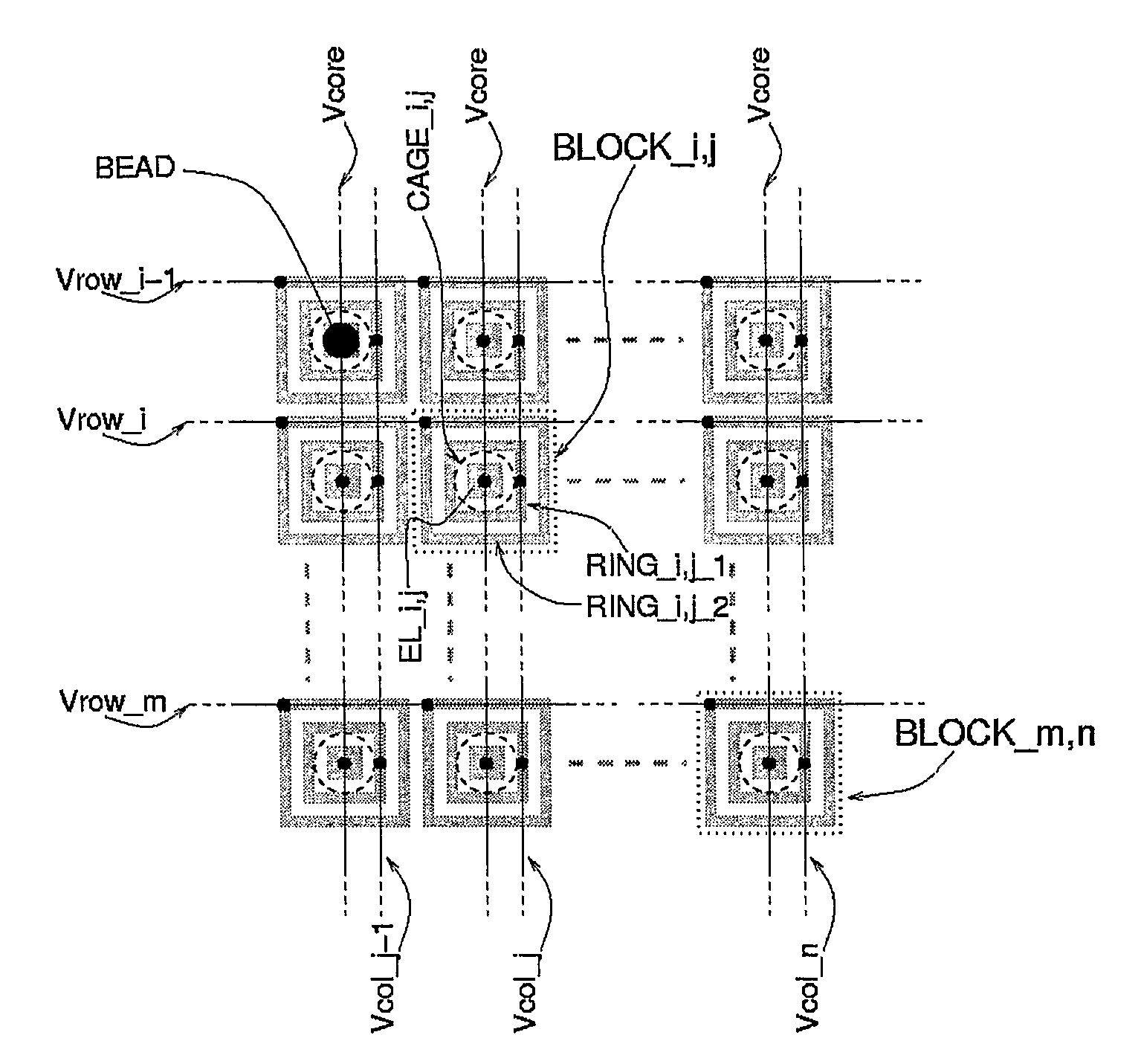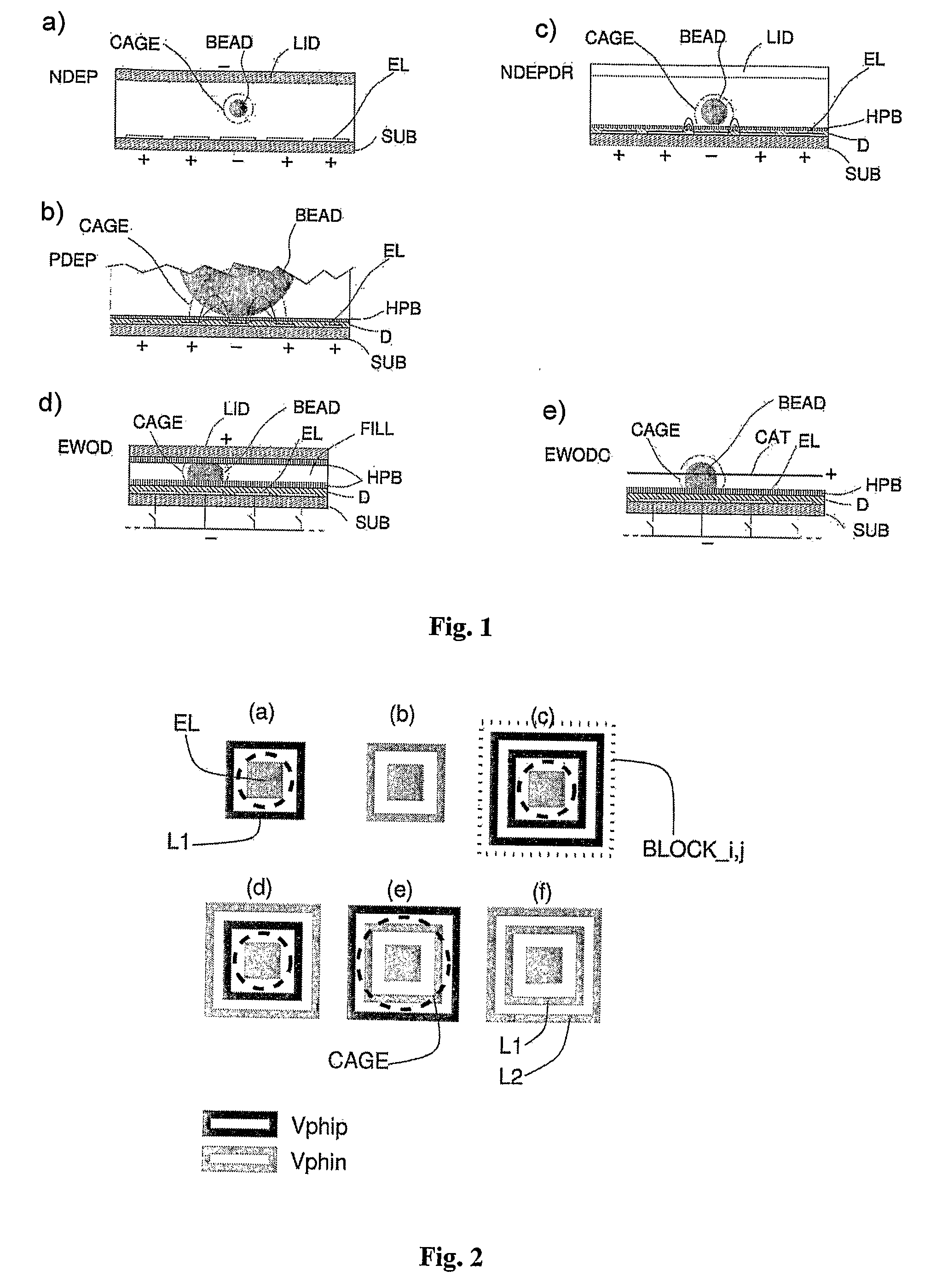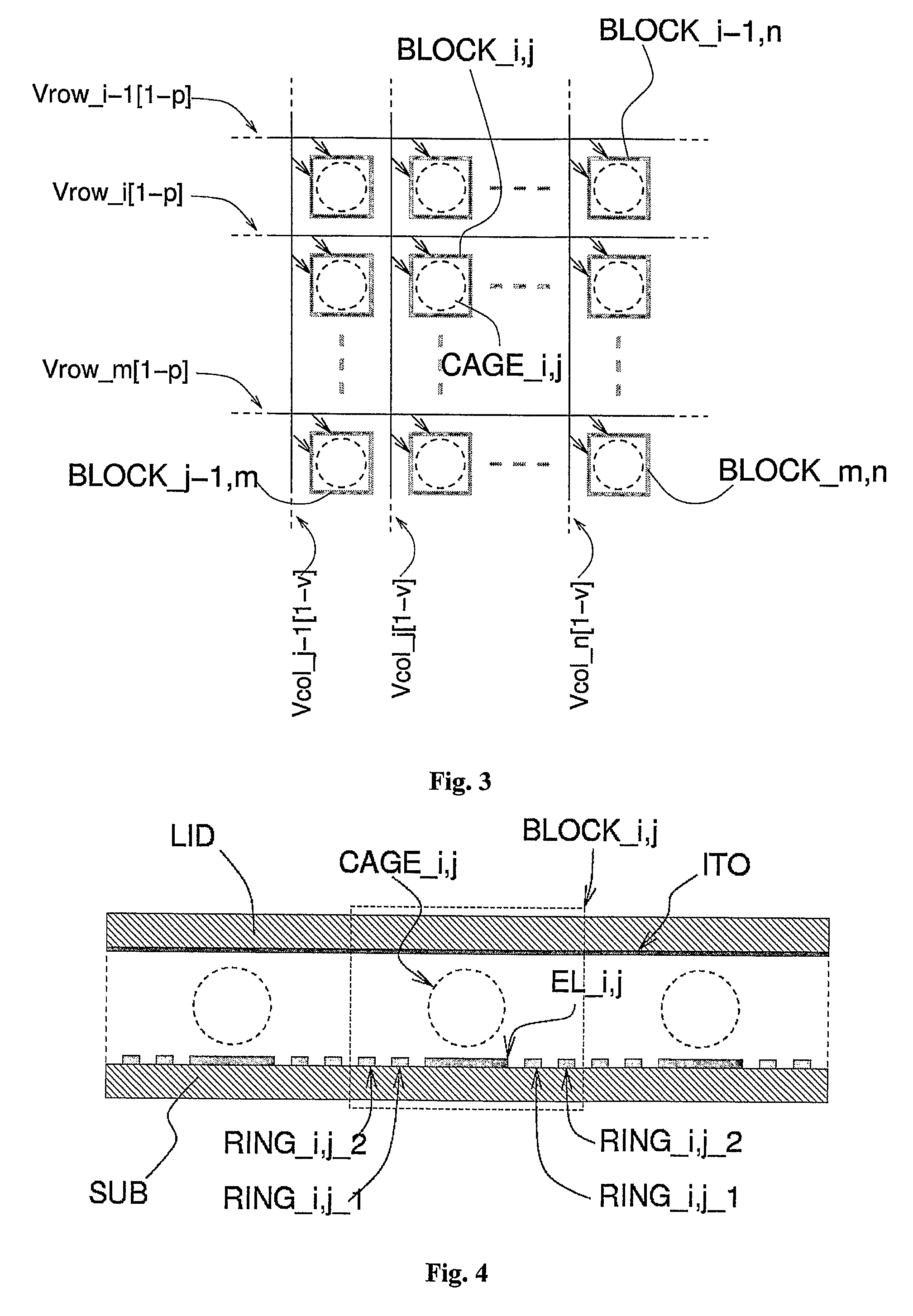Method And Apparatus For The Manipulation And/Or The Detection Of Particles
- Summary
- Abstract
- Description
- Claims
- Application Information
AI Technical Summary
Benefits of technology
Problems solved by technology
Method used
Image
Examples
first embodiment
[0093]FIGS. 4 and 5 are, respectively, a cross-sectional view and a top plan view of the apparatus according to the present invention. A homogeneous array of groups (BLOCK_i,j) of electrodes forms an array of size n×m. Each block (BLOCK_i,j) is constituted by a central electrode (EL_i,j) connected to a signal common to the entire array (Vcore) and two concentric electrodes (ring_i,j_1, ring_i,j_2) connected to two different voltages (Vrow_i, Vcol_j) distributed in the array, respectively, in rows and columns as illustrated in FIG. 5. A further signal (Vlid) is connected to the cover (LID), constituted by a single electrode (ITO) (illustrated only in FIG. 4). The device consequently requires as a whole n+m+1+1 signals for control of n×m attraction cages, each of which can entrap a single particle (BEAD) or a group of particles. It is evident that a square array (n=m) minimizes the number of control signals with respect to the number of blocks constituting the n×m array.
[0094]By apply...
second embodiment
[0112]A further embodiment of the method according to the present invention is illustrated schematically in FIG. 20. The method uses a set of points of stable equilibrium that are static for the force (F) that acts on the particles, located within blocks (BLOCK_i,j), the function of which is that of entrapping stably a particle, and a set of points of stable equilibrium moving along lanes in the horizontal direction (HRCH1-HRCHM) or vertical direction (VRCH1-VRCHN). Each of these blocks (BLOCK_i,j) can be configured for entrapping the particle or pushing it within the basin of attraction of one of the points of stable equilibrium moving along the lanes. This can be obtained exploiting one of the methods described according to the present invention, for example joining the point of stable equilibrium of the block to one of the points of stable equilibrium of the lanes. It is evident that each of the particles present in the sample can consequently be parked within the blocks or else ...
PUM
| Property | Measurement | Unit |
|---|---|---|
| Time | aaaaa | aaaaa |
| Force | aaaaa | aaaaa |
| Dielectric polarization enthalpy | aaaaa | aaaaa |
Abstract
Description
Claims
Application Information
 Login to View More
Login to View More - R&D
- Intellectual Property
- Life Sciences
- Materials
- Tech Scout
- Unparalleled Data Quality
- Higher Quality Content
- 60% Fewer Hallucinations
Browse by: Latest US Patents, China's latest patents, Technical Efficacy Thesaurus, Application Domain, Technology Topic, Popular Technical Reports.
© 2025 PatSnap. All rights reserved.Legal|Privacy policy|Modern Slavery Act Transparency Statement|Sitemap|About US| Contact US: help@patsnap.com



